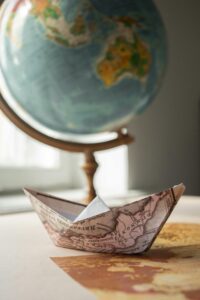Combining origami with other art forms
Origami, the ancient Japanese art of paper folding, has captivated artists and enthusiasts worldwide for centuries. Its elegance and simplicity provide a unique medium for creative expression. However, when combined with other art forms, origami transcends its traditional boundaries, opening up new realms of artistic possibilities. One such captivating fusion is the integration of origami with watercolor techniques. This combination not only enhances the aesthetic appeal of each art form but also presents innovative ways to explore texture, color, and form.
Watercolor painting, known for its fluidity and translucence, complements the structured precision of origami beautifully. The unpredictable nature of watercolor pigments as they blend and flow across the paper adds a layer of complexity and depth to the otherwise geometric and methodical nature of origami. By incorporating watercolor, artists can infuse their folded creations with vibrant hues and subtle gradients, creating a visually striking contrast between the two mediums.
The process of combining origami with watercolor begins with careful planning and consideration. Artists must first decide whether to apply the watercolor pigments before or after the paper folding. Each approach offers distinct advantages. Painting the paper prior to folding allows the colors to spread and blend naturally, creating an organic, abstract pattern that can be strategically incorporated into the final folded form. This method requires a keen understanding of how the paper will be manipulated, as the placement of colors can significantly impact the visual outcome of the finished piece. See https://www.origami-shop.com/en/ for origami papers.

Conversely, applying watercolor after the origami model has been folded provides artists with more control over the distribution of color. This technique enables them to highlight specific areas, adding emphasis and detail to particular sections of the model. For instance, an artist might choose to accentuate the wings of an origami crane with delicate washes of blue and green, creating a lifelike representation that evokes a sense of movement and vitality. This approach also allows for the layering of colors, building up richness and depth that enhances the three-dimensional quality of the origami.
Furthermore, the choice of paper plays a crucial role in the successful integration of watercolor techniques. Traditional origami paper, often referred to as “kami,” is typically thin and lightweight, making it susceptible to warping and tearing when exposed to moisture. Therefore, artists often opt for heavier, more durable papers such as watercolor paper or mixed-media paper, which can withstand the application of wet pigments without compromising the integrity of the folds. The texture of these papers also adds an additional element of interest, as the surface can interact with the watercolor in unique ways, creating subtle variations in tone and texture.
In addition to technical considerations, the fusion of origami and watercolor invites artists to explore thematic and conceptual connections between the two art forms. The fluidity and spontaneity of watercolor can be seen as a metaphor for the natural world, while the structured, deliberate folds of origami represent human intervention and creativity. By merging these elements, artists can create works that reflect the harmonious coexistence of nature and human ingenuity, offering viewers a deeper appreciation of the intricate relationship between art and the environment.
In conclusion, the combination of origami and watercolor techniques represents a harmonious blend of tradition and innovation. This fusion not only enhances the visual and tactile qualities of each medium but also encourages artists to push the boundaries of their creativity. Through careful planning, thoughtful execution, and a deep understanding of both art forms, artists can create captivating works that celebrate the beauty of convergence and the endless possibilities that arise from the union of diverse artistic expressions.